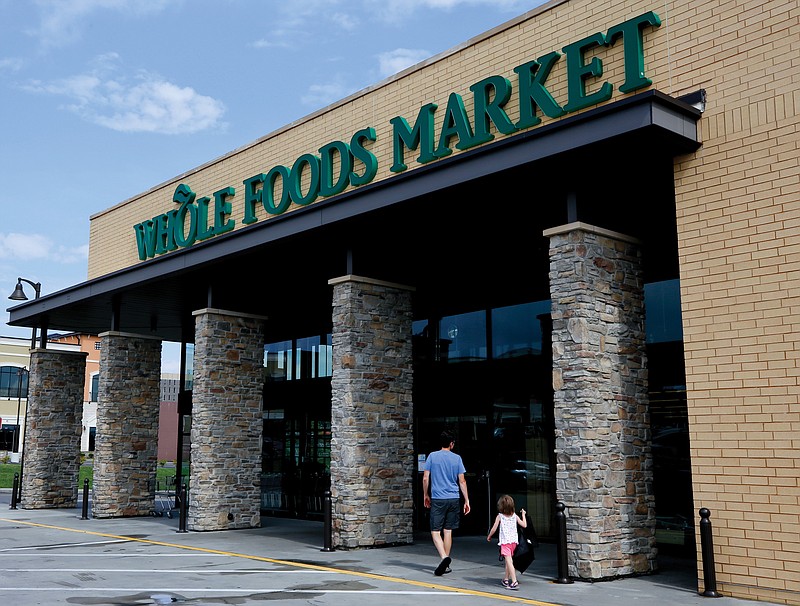Sales at Amazon's stores, mostly from its Whole Foods grocery chain, fell by 16% in the first three months of this year compared with the same period in 2020, according to Marketwatch. Those sales have now been declining for a year.
The numbers from Amazon have gaping holes that make it hard to know exactly what's happening.
The problem is that those numbers don't include the grocery orders that people place online and then pick up at stores or have delivered. Those sales have mushroomed during the pandemic for Amazon and its competitors.
An Amazon spokesman said that adding up all of the ways that people are grocery shopping from Whole Foods, including online ordering for pickup or deliveries, shows that the company's sales have been increasing.
Amazon doesn't give specifics, however. If Amazon is selling many more groceries than it did before the pandemic -- as is the case with Walmart and Target -- the company is being uncharacteristically quiet about it.
[CORONAVIRUS: Click here for our complete coverage » arkansasonline.com/coronavirus]
Sucharita Kodali, who studies shopping and consumer behavior for the research firm Forrester, recently dug into shoppers' pandemic-altered habits and found that many people were eager to roam the grocery aisles again.
Yes, many people tried grocery delivery or curbside pickups at stores for the first time during the pandemic, and some of those habits will stick. But, Kodali wrote in a recent report, "The vast majority of grocery sales in the U.S. happen and will continue to happen in stores."
Stores are familiar to navigate, and some people are nostalgic for their old habits, Kodali said. And many people, according to Forrester's analysis, have been discouraged by botched orders, high prices or other problems with online grocery shopping.
Many companies -- including Amazon, Target and Walmart -- also pluck many items for online grocery orders from the regular store shelves. Grocery sellers need their stores for in-person shopping and the virtual kind.
Walmart, the regional chain Kroger, and startups like Instacart and Uber are trying ideas to shake up the grocery industry. Besides its still-unproven technology to skip the cashier lines at stores, Amazon's big move in groceries seems to be opening a new chain in addition to Whole Foods.
Amazon reported April 29 that it had first-quarter net income of $8.11 billion.
The results surpassed Wall Street expectations. The average estimate of 15 analysts surveyed by Zacks Investment Research was for earnings of $9.75 per share.
The online retailer posted revenue of $108.52 billion in the period, also beating forecasts. Sixteen analysts surveyed by Zacks expected $105.23 billion.
For the current quarter ending in July, Amazon said it expects revenue in the range of $110 billion to $116 billion. Analysts surveyed by Zacks had expected revenue of $108.03 billion.
